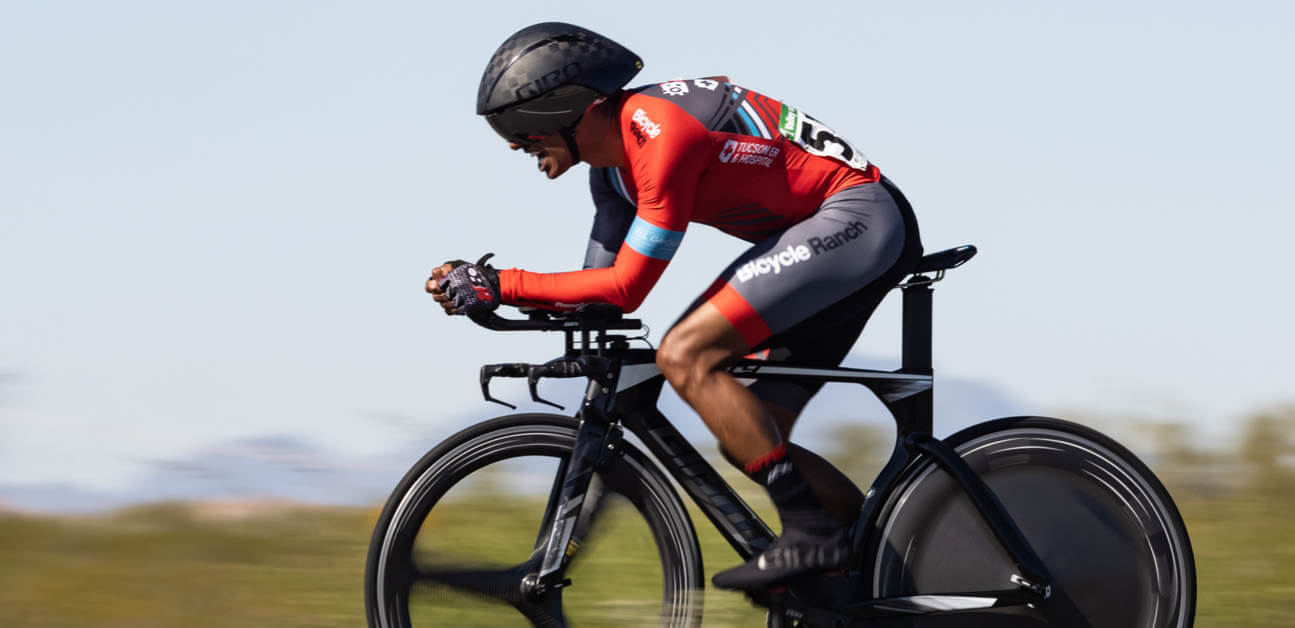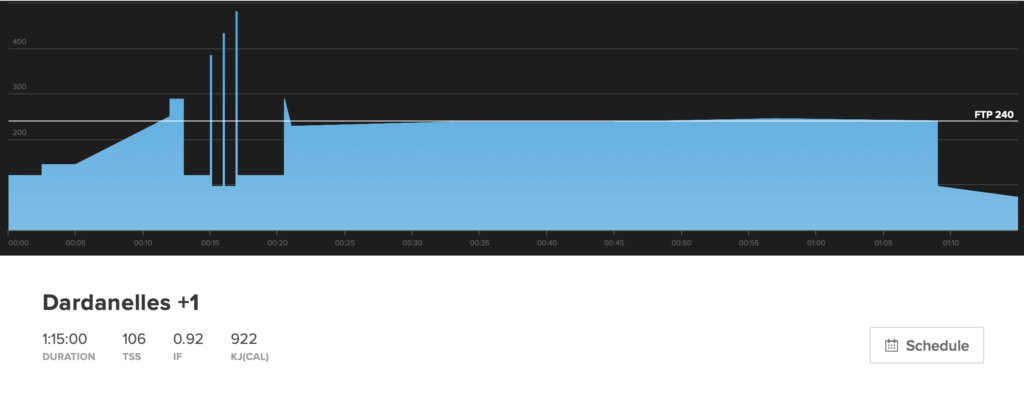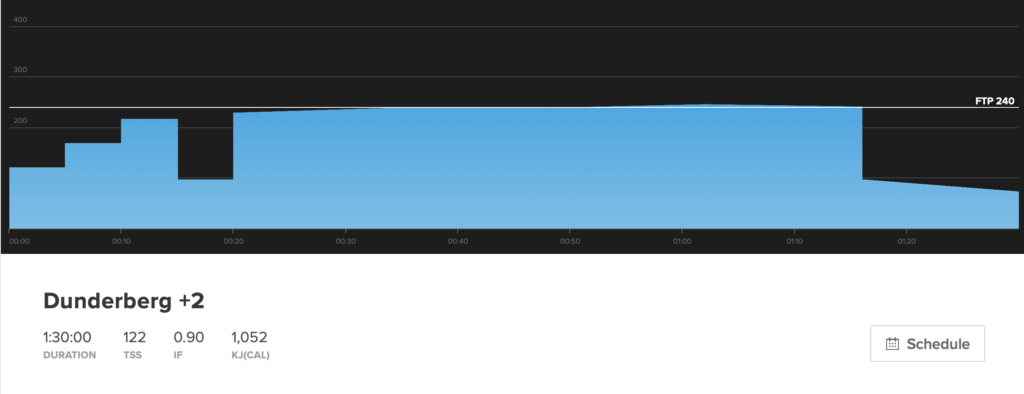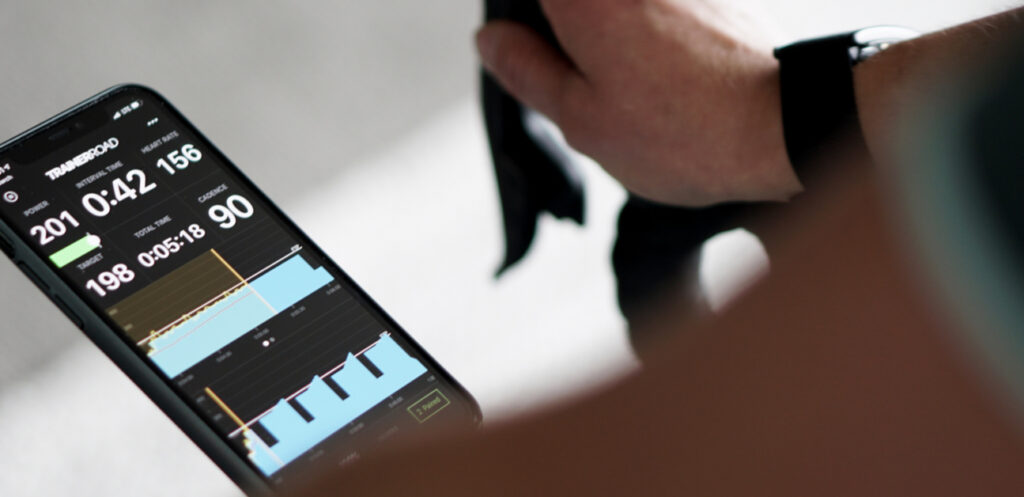Time Trial Training: How To Be a Faster Time Trialist

Time Trials are known as the race of truth for a reason. This unique form of racing tends to reveal the strengths and weaknesses of cyclists. Time trialists must effectively train the ability to pace their highest sustainable power over time trial distances and along the way build toughness, get accustomed to uncomfortable positioning, and ultimately get faster.
Training for a time trial isn’t about the equipment. It’s about the rider. You can put a lackluster rider on the very best equipment, and the outcome will be less than optimal. But couple a well-conditioned rider with less than stellar gear, and you’re likely to see an impressive performance. It’s the rider that matters most, so training should be a top priority.
What is a Time Trial?
A time trial is a race against the clock where cyclists race individually, and the winner is the one with the fastest overall time. Instead of a mass start, riders are assigned start times and are prohibited from drafting. This places a premium on aerodynamics and power production. Courses for time trials can vary a fair bit, but traditionally they tend to be flatter. However, time trial races may feature a significant climb.
Common Time Trial Distances
Course distances can vary as well. Officially, the shortest time trials are ten miles long, but some events can be over one hundred miles. The classic time trial distance, used in many stand-alone events, is 40km or 24.85 miles.
Time Trial Training
Perfecting the art of time trialing begins with increasingly specific forms of training. Time trial training should focus on increasing your maximum steady-state power by building your aerobic capacity and muscular endurance. Through progressive training phases, you’ll raise your FTP and the ability to ride at FTP longer.
What type of fitness do I need?
To exceed in time trials, you’ll need to be able to sustain high power for a long time, all while maintaining an aerodynamic position. With that in mind, a time trial training plan will focus extensively on sustained aerobic power.
Adaptive Training
Get the right workout, every time with training that adapts to you.
Check Out TrainerRoadTo gain the needed fitness, aerobic capacity efforts will need to grow longer, whether they’re short bursts of max-aerobic power or long, low-intensity sessions. Additionally, you’ll need to work on riding slightly below and above FTP, coupled with vital muscle endurance work as you adapt to power output closer to your intended time trial wattage.
Should I Train in Time Trial Position?
Yes, you should train in the aero position. Time trials boil down to one thing—preparation. This means that you will need to train in the time trial position. Spending time at your projected time trial pace is an extremely uncomfortable place to be. It’s the hardest you can go without falling over the edge. Even the slightest change in body position can send you over the edge if you’re not prepared for it.
Training in your time trial position will help your body adapt to the physical demands of your power output. And let’s face it, that position isn’t for comfort; it’s all about speed. Training in the aero position will also help your mental strength and provide an opportunity to test and make changes. In general, you’ll want to spend more time in your time trial position the closer you get to your goal event.
Time Trial Training Plan
Particular physical conditioning is necessary to continuously go fast for 10 miles, 40 kilometers, and certainly 50-100 miles. TrainerRoad’s 40k TT plan progressively builds your fitness, so you be ready to race against the clock.
Base
Your training plan will begin with the necessary emphasis on elevating aerobic capacity with Sweet Spot Base. This can be developed through short, intense intervals well above FTP, long, low-intensity blocks of steady effort, or sometimes a combination of the two. The goal is the same—to work aerobically at higher and higher levels of power output.
Additionally, a concurrent focus is placed on gradually lifting FTP with suprathreshold workouts such as over-unders. Workouts like these stress your mind and muscles in a way that hints at the level of effort and discomfort necessary to time trial at your highest level.
Finally, a hefty measure of muscle endurance work is included throughout Base Phase. Sweet Spot workouts will enhance your stamina by working at high but subthreshold percentages of FTP for increasing durations. This is the ideal time to weave in work done in your aerodynamic TT position and begin the process of refining your fit.
Build
Taking the specificity of your time trial training further, the Sustained Power Build training phase develops TT-centric forms of fitness to a higher level. Optimal time trialing is only possible following a meticulous build-up of stamina, time in position, and high-end muscle endurance. So now it’s time to hone your high-level time trial capabilities to near-perfection during a properly progressed event-specialization phase.
Specialty
Unlike the previous training phases, the 40k TT Speciality phase is built around familiarization, event-specific stamina, and last-minute FTP improvements. This familiarity goes hand in hand with the benefit of riding for durations close to the duration of your most important event.
The 40k TT Specialty Training Plan includes dedicated weekly time trial workouts to provide you with opportunities to ride in the aero position at race pace. These TT-focused workouts are specifically designed to help you achieve your fastest outcome on race day.
Example Time Trial Workouts
Depending on your plan volume, you will experience either one of two practice time trial workouts in week one of the Speciality Phase. Each workout’s primary goal is to practice pacing for a time trial lasting about an hour, with the target power being that what you plan on race day.
Each practice time trial workout allows you to feel what proper pacing feels like, test nutrition, and spend time in the aero position. Each time trial also starts with a hard effort to get up to speed, then settle into the planned power for the remainder of the time.


Every practice time trial is an opportunity to grow as a rider in this arena. In becoming accustomed to the mental strain of riding this close to your FTP, both physical and mental adaptations will occur, and your confidence in performing future workouts and events will increase.
How to Pace a Time Trial
A pacing strategy is an essential piece of the puzzle for a rider seeking their fastest time trial. Nearly all time trials reward a negative split pacing strategy, which centers on going faster the second half of the race. That means starting out easier than you can sustain, then building towards the top end of your sustainable power by the end. This is one of the most challenging aspects of time trialing but one that reaps massive rewards.
When you hit the hills, remember not to exceed 105% of your planned power on the climbs, but not drop below 95% of your planned power on the descents. This is a sweet spot where your body experiences the least amount of fatigue but carries the highest overall speed. Don’t forget to accelerate over the top of a climb to get back up to speed.
Having a power target for race day is an integral part of the planning process. Your target power will depend on how long you’ll be on the bike. For more on determining a power target for your event, check out How To Build A Pacing Plan For Long Events.
Your time trial training gives you plenty of opportunities to practice your target power. The more time you can spend riding at the given intensity, the more comfortable you’ll feel while performing in time trials. This is the reason for event-practice workouts starting in the Speciality Phase.
If you have been riding your practice time trials, you will be familiar with your power and previous performances. Use this to your advantage, and don’t allow another rider or a specific time to change your carefully formulated plan to perform on race day.
Time Trial Positioning
Practice time trials will familiarize you with the demands of your goal event. It’s best to complete your intervals on the setup you will use during race day and riding that setup multiple times a week. It also means finding the balance between aero, comfort, and power production with your bike fit. Being familiar with your position and your equipment is essential to feeling confident going into your event.
Time Trial Race Tips
- Get to the race early. Allow yourself at least an hour and a half before your start time to warm up, pre-ride the course, and fuel.
- Make sure to complete a specific warmup. In the weeks before your race, experiment and find out what type of warmup works best for you.
- Pre-ride the course if possible. If you can’t, spend some time using Google Maps’ Street View to see turns and other tricky sections. It can help to put distance cues or landmarks on a cheat sheet taped to your stem or top tube.
- Don’t blow up out of the gate, go hard to get up to speed, and get into your aero bars as soon as possible.
- Plan your nutrition strategy and make sure you know what you’re going to eat or drink and when.
For more cycling training knowledge, listen to Ask a Cycling Coach — the only podcast dedicated to making you a faster cyclist. New episodes are released weekly.
